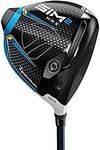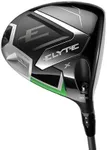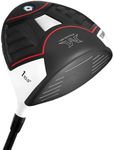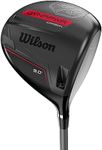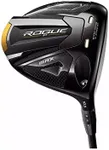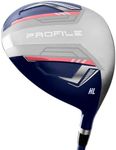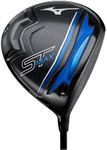Buying Guide for the Best Golf Drivers
Choosing the right golf driver can significantly impact your game, as it is one of the most important clubs in your bag. The driver is used to hit the ball the farthest, typically off the tee, and selecting the right one can help you achieve greater distance and accuracy. When choosing a golf driver, consider your skill level, swing speed, and personal preferences. Understanding the key specifications of a driver will help you make an informed decision that suits your playing style and needs.LoftThe loft of a golf driver refers to the angle of the clubface, which affects the trajectory and distance of your shots. Loft is important because it helps determine how high and far the ball will travel. Drivers typically have lofts ranging from 8 to 15 degrees. Lower lofts (8-10 degrees) are generally suited for players with faster swing speeds who can generate more lift, while higher lofts (12-15 degrees) are better for those with slower swing speeds, as they help get the ball airborne more easily. To choose the right loft, consider your swing speed and the typical trajectory of your drives.
Shaft FlexShaft flex refers to the ability of the shaft to bend during the swing, which can affect the accuracy and distance of your shots. It is important because the right flex can help you achieve better control and power. Shaft flex is categorized into extra stiff, stiff, regular, senior, and ladies. Extra stiff and stiff shafts are typically for players with fast swing speeds, providing more control. Regular flex is suitable for average swing speeds, while senior and ladies flexes are designed for slower swing speeds, offering more distance. Choose a shaft flex that matches your swing speed and strength.
Head SizeThe head size of a driver is measured in cubic centimeters (cc) and affects the forgiveness and playability of the club. Larger head sizes, such as 460cc, offer more forgiveness on off-center hits, making them ideal for beginners or those who struggle with consistency. Smaller head sizes, around 440cc, provide more control and workability, which can be beneficial for more experienced players who want to shape their shots. Consider your skill level and how often you hit the ball off-center when choosing the head size.
AdjustabilityAdjustability in a golf driver refers to the ability to change certain features, such as loft, lie angle, and weight distribution, to better suit your swing and playing conditions. This is important because it allows you to fine-tune the driver to optimize performance. Adjustable drivers can be beneficial for players who want to experiment with different settings to find the best configuration for their game. If you enjoy tinkering with your equipment or want the flexibility to adapt to different courses, consider a driver with adjustable features.
Weight DistributionWeight distribution in a driver affects the balance and feel of the club, as well as the trajectory and spin of the ball. It is important because it can influence your ability to control the ball flight. Drivers with a low and back weight distribution tend to produce higher launch angles and more forgiveness, which can be helpful for players who need help getting the ball airborne. Drivers with a forward weight distribution can produce lower spin and a more penetrating ball flight, which may benefit players with faster swing speeds. Consider your typical ball flight and what you want to achieve when selecting a driver with the right weight distribution.
